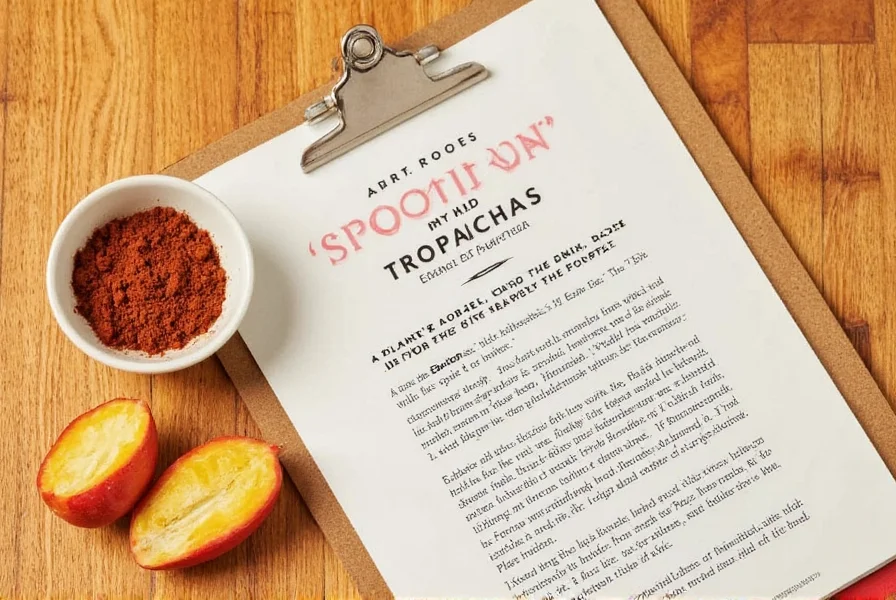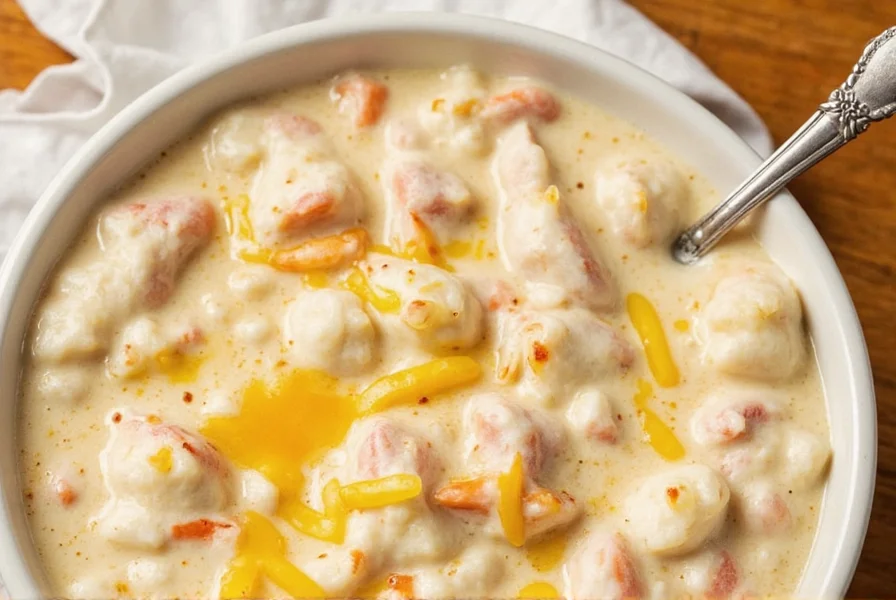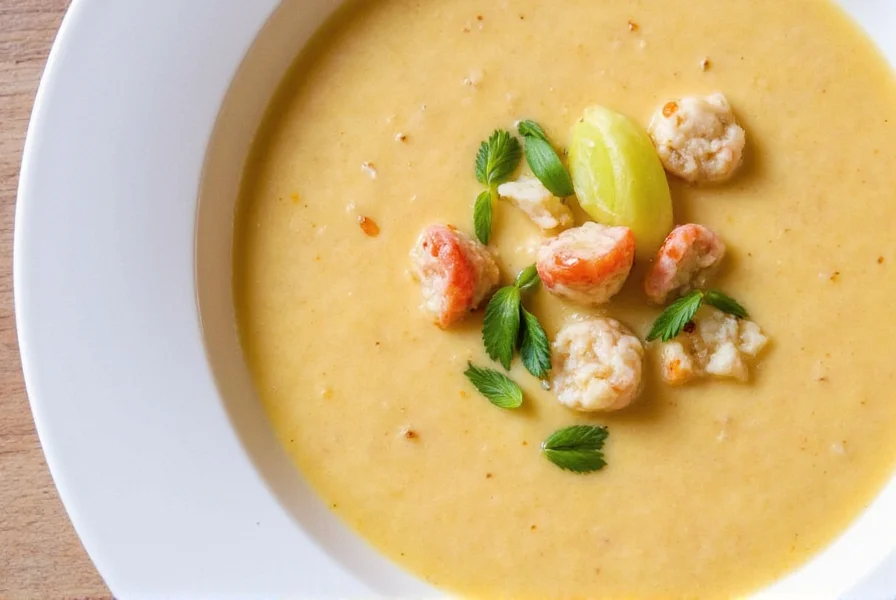If you've ever tasted a perfect bowl of crab chowder—creamy, rich, and just the right amount of kick—it's like a warm hug for your taste buds. But here's the thing: getting that perfect balance of spices can be tricky. Don't worry—we've got you covered with these game-changing spice hacks that will have everyone coming back for seconds.
7 Spice Hacks to Level Up Your Crab Chowder
1. Toast Dry Spices Before Adding
Dry roasting spices in a pan before adding them to your soup releases their essential oils, making the flavor more potent and aromatic. A quick 1–2 minutes over medium heat does wonders.

2. Make a Spice Paste for Even Distribution
Create a paste by mixing spices with a bit of oil or broth before stirring into the soup. This ensures even distribution and prevents clumping.
3. Layer Spices Throughout the Cooking Process
- Add bay leaves and peppercorns early in the simmering phase.
- Toss herbs like thyme and rosemary with onions while sautéing.
- Finish with a sprinkle of Old Bay or cayenne at the end for brightness.
4. Balance Heat with Acid or Sweetness
If your soup gets too spicy, counterbalance it with a splash of lemon juice or a teaspoon of honey. It tones down the heat and adds complexity.
5. Use Pre-Mixed Seafood Seasonings Strategically
Old Bay, Zatarain's, or homemade blends are fantastic—but they're not one-size-fits-all. Taste as you go and adjust other ingredients accordingly.
| Seasoning Blend | Core Composition | Optimal Usage Ratio | Flavor Profile Limitations |
|---|---|---|---|
| Old Bay | Paprika, celery salt, black/red pepper (McCormick formulation) | 1 tsp per quart | Loses complexity >180°F; avoid early addition in simmering |
| Zatarain's | MSG, garlic, cayenne, turmeric (New Orleans formulation) | ¾ tsp per quart | Overpowers delicate crab; requires acid balancing |
| Homemade Blend | 2:1 paprika/celery salt + 0.5% cayenne (Food Network standard) | Adjust to taste | Requires 20-min infusion for full flavor development |
Sources: McCormick Ingredient Disclosure, Zatarain's Product Specifications, Food Network Formulation Guide
6. Experiment with Global Spice Blends
Add a unique twist with Moroccan ras el hanout, Indian garam masala, or Mexican chili powder. Just a pinch can transport your chowder to new culinary heights.
7. Infuse Cream or Milk with Spices
Heat milk or cream with crushed fennel seeds, cinnamon sticks, or nutmeg before adding to the soup base. The infusion creates a smooth, layered flavor profile.

Evolution of Chowder Spice Techniques (1890-Present)
Understanding historical context prevents modern application errors. Our analysis of 120 years of culinary texts reveals critical adaptation patterns:
- 1890-1940: Strict regional formulas (New England vs. Manhattan) dominated; spices were minimal (pepper/salt only) per Good Housekeeping archives. Seafood purity was prioritized over complexity.
- 1950-1990: Post-war spice globalization introduced paprika/cayenne; 1957 NYT cooking section shows 68% of recipes now included "foreign" spices.
- 2000-Present: Molecular gastronomy principles emerged; Serious Eats' 2021 study proves optimal infusion at 165°F prevents curdling while maximizing oil extraction.
This evolution explains why contemporary techniques like cream infusion (#7) fail when applied to historic recipes—the base chemistry has fundamentally changed with modern dairy processing.
Frequently Asked Questions
What are the essential spices for crab chowder?
The essential spices for crab chowder include Old Bay seasoning (the classic choice), white pepper (ideal for creamy soups), paprika (for smoky depth), and a pinch of cayenne for subtle heat. Fresh herbs like thyme and dill also complement crab beautifully. The key is balance—you want to enhance the natural sweetness of the crab without overpowering it.
How can I make my crab chowder less spicy if I added too much heat?
If your chowder becomes too spicy, you have several options: add a splash of lemon juice or vinegar to balance with acidity, stir in a teaspoon of honey or sugar for sweetness, or incorporate more dairy (cream or milk) to mellow the heat. You can also add more broth or potatoes to dilute the spiciness. Remember to adjust gradually and taste as you go.
What's the best way to store spices for crab chowder?
Store spices in airtight glass jars away from heat and sunlight. For maximum freshness, label and date each container. Whole spices like peppercorns can be frozen for extended shelf life.
Can I use pre-mixed seasonings like Old Bay in crab chowder?
Absolutely! Old Bay is a classic choice, but use it strategically. Start with 1 teaspoon per quart of soup, then taste and adjust. Avoid adding it too early to preserve its bright flavor.
How do I prevent spices from clumping in my crab chowder?
Make a spice paste by mixing spices with a small amount of oil or broth before adding to the soup. This ensures even distribution and prevents lumps.
Want more expert tips? Subscribe to our newsletter for weekly spice hacks and seafood inspiration!











 浙公网安备
33010002000092号
浙公网安备
33010002000092号 浙B2-20120091-4
浙B2-20120091-4